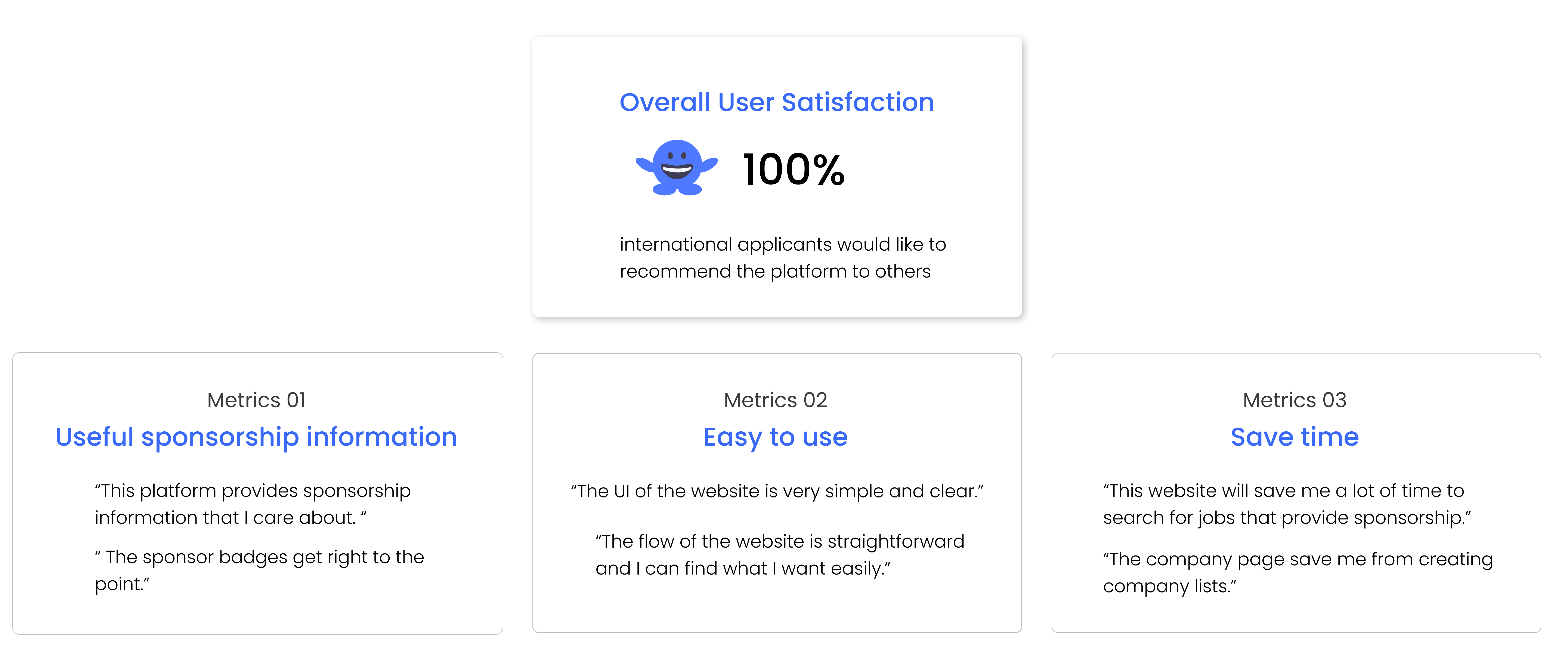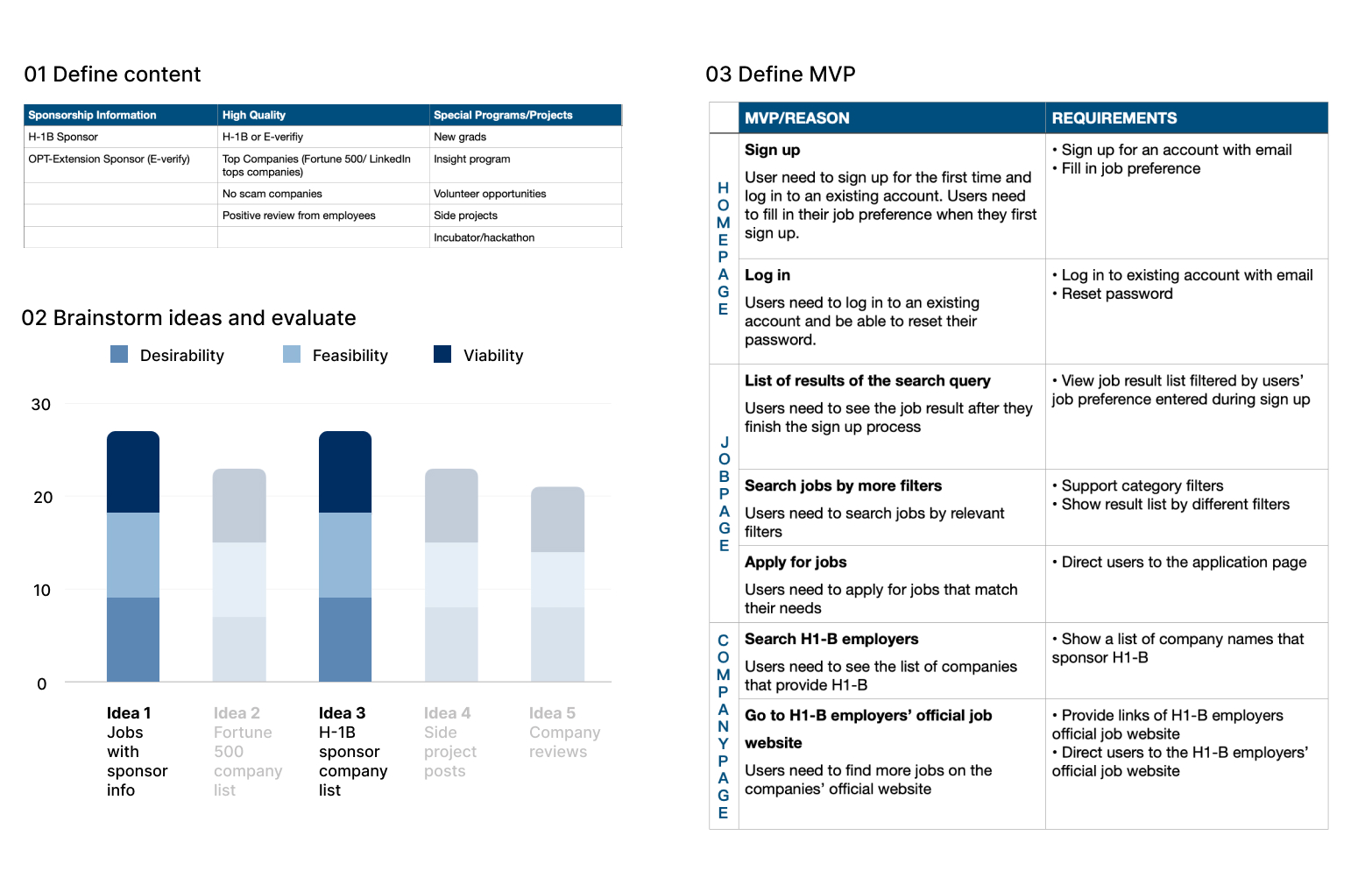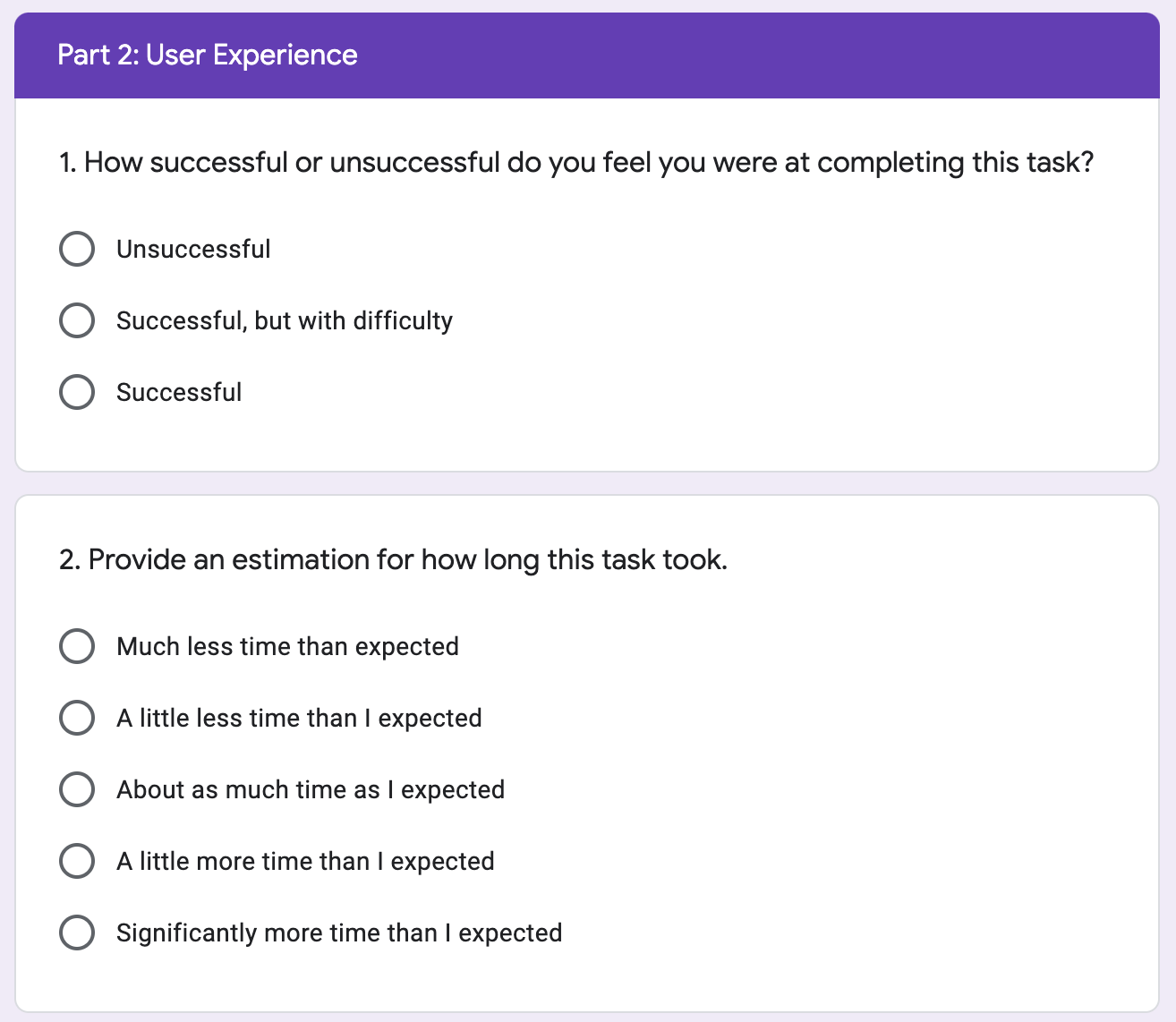The result
We surveyed and interviewed 12 international applicants in the usability testing for the MVP to gather feedback and evaluation for the platform.

06/2020 - 05/2021
Aitou is an early start up that wanted to build a job searching platform that can help international students find matching jobs in the US. As the sole designer in the team, I drove the product, design and user research.
Developers: Ben, Nick, Josh, Binwei, Crystal
Figma, Github, Visual Studio Code, Miro, Google Form, Trello, Slack, Amazon AWS

• There is no existing platform that only targets international applicants to help them find matching jobs
• One major problem for international applicants is that they have difficulty in finding out whether the company sponsor H-1B or OPT-extension when searching for job
(CLICK TO UNDERSTAND THE CONTEXT)
Users can:
• See H-1B sponsor badge or OPT-extension sponsor badge at every job posts
• Know sponsor history of the company in the job description modal
• Apply through the H-1b sponsored company list
• All the jobs provided on our website are sponsored (H-1B or OPT-extension)
We surveyed and interviewed 12 international applicants in the usability testing for the MVP to gather feedback and evaluation for the platform.


Our goal for the project was to empower international students in the job hunting process. As international students ourselves, we feel that it is very hard for us to find matched jobs and there is no platform that is specifically designed to support us. Our ambitions were to create a best platform that every international student would think of when they are about to find jobs.
Our high level goals were to:
• Make it easy to use.
• Provide valuable support that other platforms don't have.
• International students can benefit from us during the job hunting process.


I narrowed down our users into two types and ruled out those who might not need our help. Our main users have same frustrations including new to the professional environment, lack of professional connections and restricted by legal status.

Beared what we knew about our main users in mind, I conducted a workshop with my teammates to better understand the user experience and surface insights.
• Time-consuming to search for opportunities that offer sponsorship.
• Hard to find side projects information and unclear about the new grad opportunities
A job searching platform that offers sponsor information, high quality jobs and special programs.
After finding the opportunities, I further defined what it means by sponsorship information, high quality and special programs. Based on the content, I brainstormed five main ideas and evaluating the desirability, feasibility and viability with engineers. We decided to focus on jobs with sponsor information and the H-1B sponsor company list first, and I defined the MVP accordingly.

Since there are a lot of successful precedents, I did competitive research on their layouts and presented the pros and cons of different designs to the team. After discussing the technical feasibility and viability, I narrowed down the design and did the prototype.

After completing the MVP, I designed a usability test that lasts 30 minutes to 45 minutes each session. The test asks users to complete a task - "Find jobs that match your need" with a follow-up survey and an interview to explore the effectiveness, efficiency and satisfaction of the website.
Observing user behavior and obstacles during the process and take notes using Google meet.

Using surveys to collect the data on the effectiveness, efficiency and satisfaction of the website using Google Form.

Using open-ended questions to further explore what users like and dislike about our website and how we can improve in future, transcribing the content in google sheet.

.jpg)
We did the iterations mainly based on the usability test that we did on 12 potential users.
We aimed to provide users with the filters that they care most when apply for jobs and can be easily changed.



We aimed to provide users with job cards that are simple and clean, but with enough information and features users need.


We will do another round of usability testing to make sure everything works well. After this, we will launch our product and start marketing to attract users and investment. We will analyze the product and add more features accordingly.